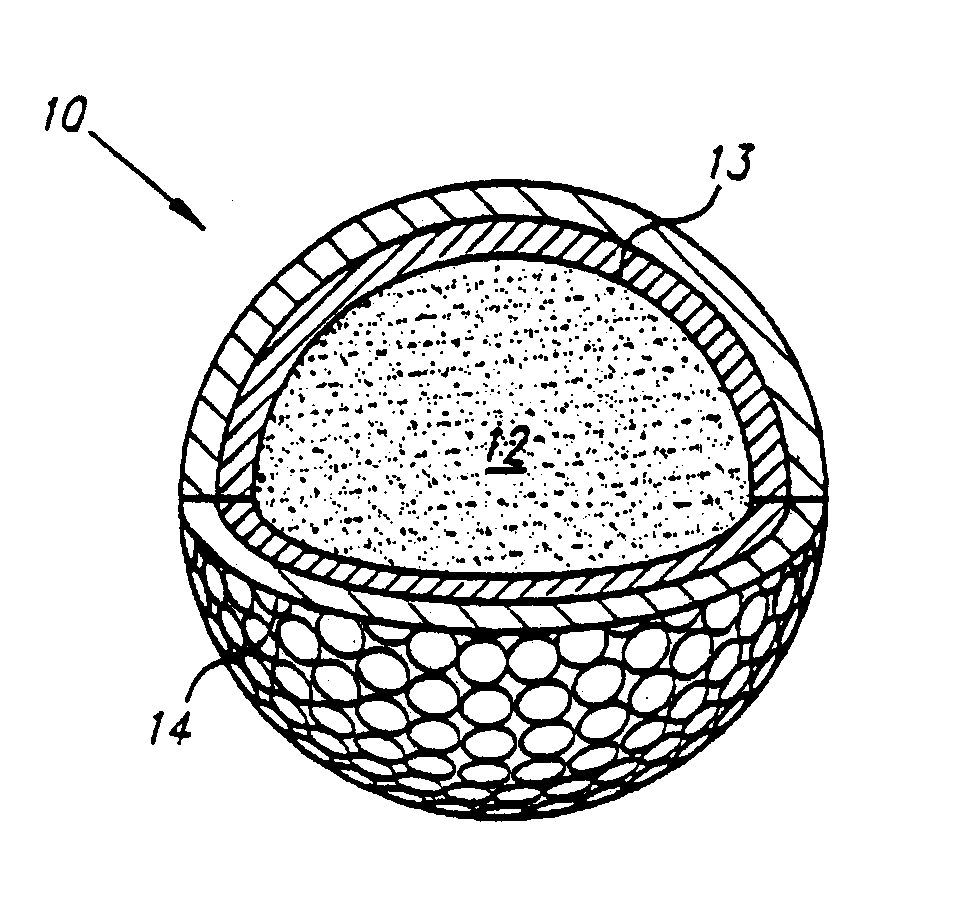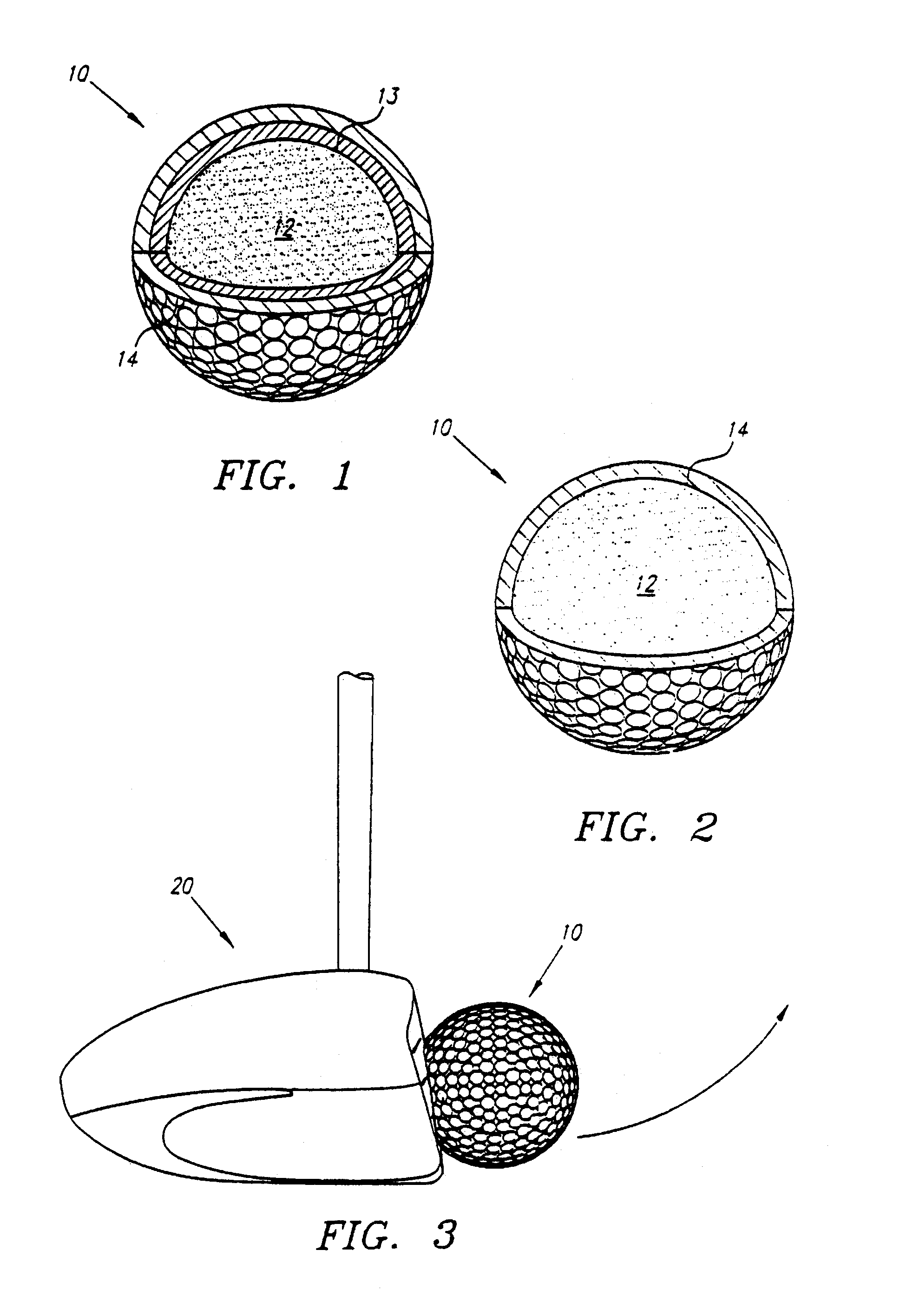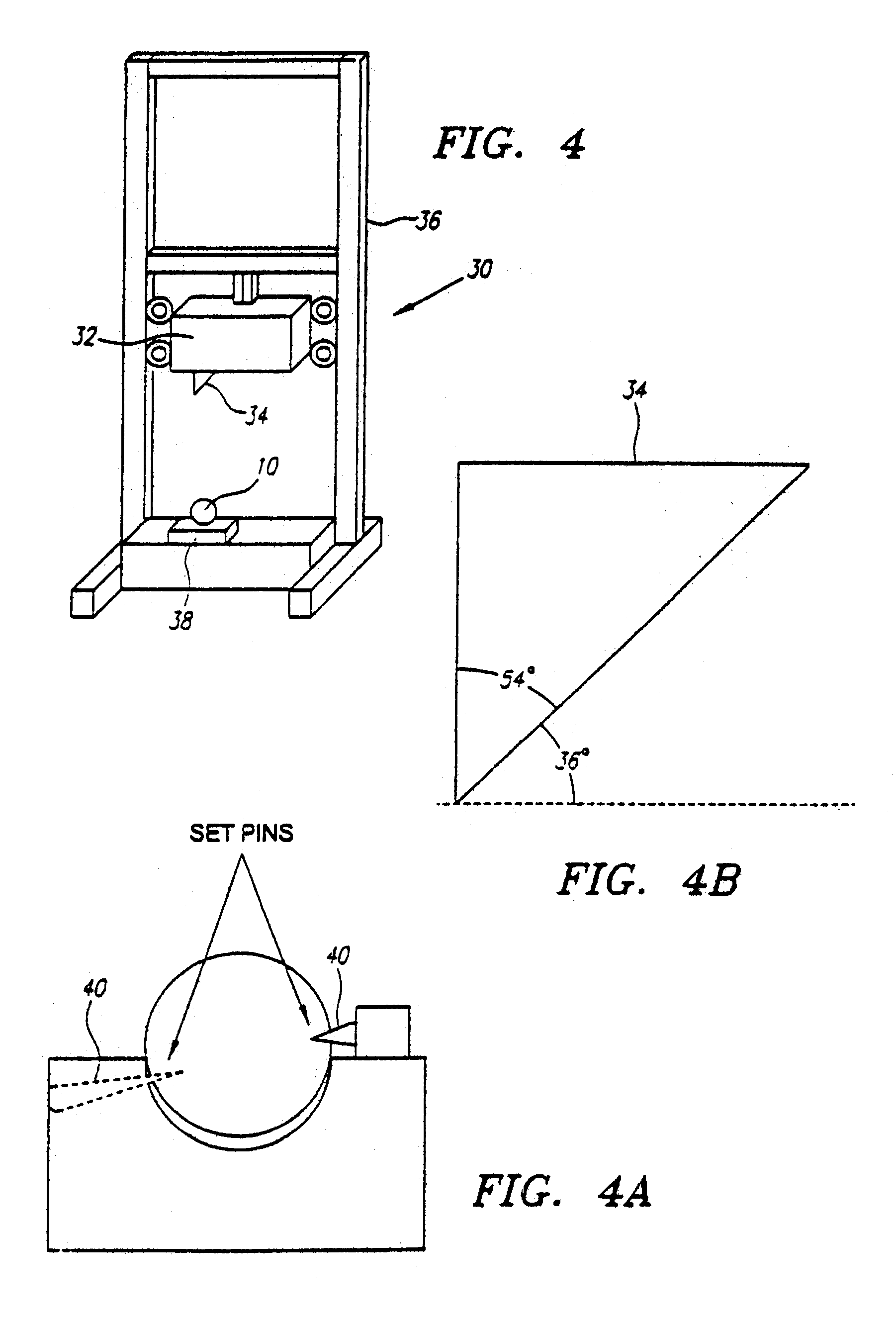Golf ball having a polyurethane cover
a golf ball and polyurethane technology, applied in the field of golf ball cover layer, can solve the problems of poor durability of golf balls covered with balata, poor cut and shear resistance, and high price of balata
- Summary
- Abstract
- Description
- Claims
- Application Information
AI Technical Summary
Benefits of technology
Problems solved by technology
Method used
Image
Examples
Embodiment Construction
of the golf balls 10 of the present invention was cured with a blend of 70 parts ETHACURE 300 and 30 parts VIBRACURE A250. The thickness of the cover layer 16 for each of the twelve golf balls 10 of present invention is either 0.0300 inches or 0.0375 inches. The shore D hardness of the cover layer 16 for each of the twelve golf balls 10 of present invention is either 47 degrees or 53 degrees.
TABLE FIVE
Table Five illustrates the comparison testing between the twelve sample golf balls 10 the present invention, and the four well-known and well-played golf balls. All of the golf balls in Table Six were subjected to the afore-mentioned shear test and rated. The golf balls were also subject to a standard robot swing test at 110 miles per hour (mph) using a BIG BERTHA.RTM. HAWKEYE@ driver, at 90 mph using a BIG BERTHA.RTM. HAWKEYE.RTM. driver, and at 79 mph using a BIG BERTHA.RTM. X-12 @ five iron. Although the REVOLUTION.RTM. had the best shear rating, its carry and total distance was onl...
PUM
 Login to View More
Login to View More Abstract
Description
Claims
Application Information
 Login to View More
Login to View More - R&D
- Intellectual Property
- Life Sciences
- Materials
- Tech Scout
- Unparalleled Data Quality
- Higher Quality Content
- 60% Fewer Hallucinations
Browse by: Latest US Patents, China's latest patents, Technical Efficacy Thesaurus, Application Domain, Technology Topic, Popular Technical Reports.
© 2025 PatSnap. All rights reserved.Legal|Privacy policy|Modern Slavery Act Transparency Statement|Sitemap|About US| Contact US: help@patsnap.com



